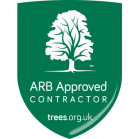With the onset of autumn, the days get shorter and air temperatures start to fall. As the light and temperature conditions change, the trees photosynthesis process starts to slow before coming to a halt. As a result of this, the chlorophyll (the green pigment that gives deciduous leaves their colour) starts to breakdown within the leaf, letting the orange and yellow pigments become visible so producing the leaves brilliant autumn colours. As these colour changes occur, additional changes within the leaves structure cause them to fall from the trees.
If possible, pruning should be avoided before leaf fall as trees are utilising proportions of the valuable energy reserves built up through the summer growth period to bring about these biological changes and shed their leaves. In addition, any resulting pruning wounds will not heal as rapidly at this time of year and so the tree may be exposed to a greater risk from fungal infection.
Health and safety tree inspections
When the leaves have fallen, it is often the best time to undertake Health & Safety tree inspections as it is much easier to spot structural defects such as bulges, splits or cracks in stems and branches.
It is also often the best time of year to identify any fungi that may be growing on or around a tree. Dependent on the species of fungi present, there may be urgent implications with regards to tree safety or structural integrity.
Should you require any help or advice then please contact us, all of our Managers and Consultants hold professional qualifications for tree inspection and hazard identification and will be able to offer sensible advice relating to risk management of trees.
Should you be considering tree planting, then autumn is the ideal season to undertake these tasks, allowing the tree to become established over the winter months leading to the best possible start as the new growth begins in the following spring.
Connick Tree Care is able to supply and plant trees according to your requirements, please click the button above to request further information or call on 0800 975 4535.
Our Accreditations









